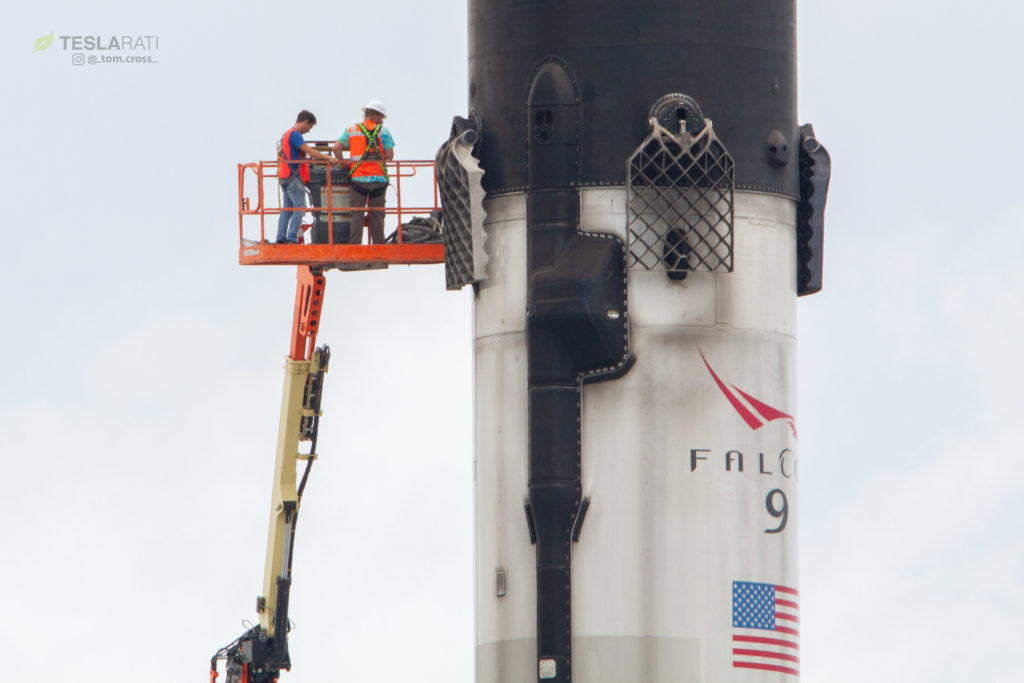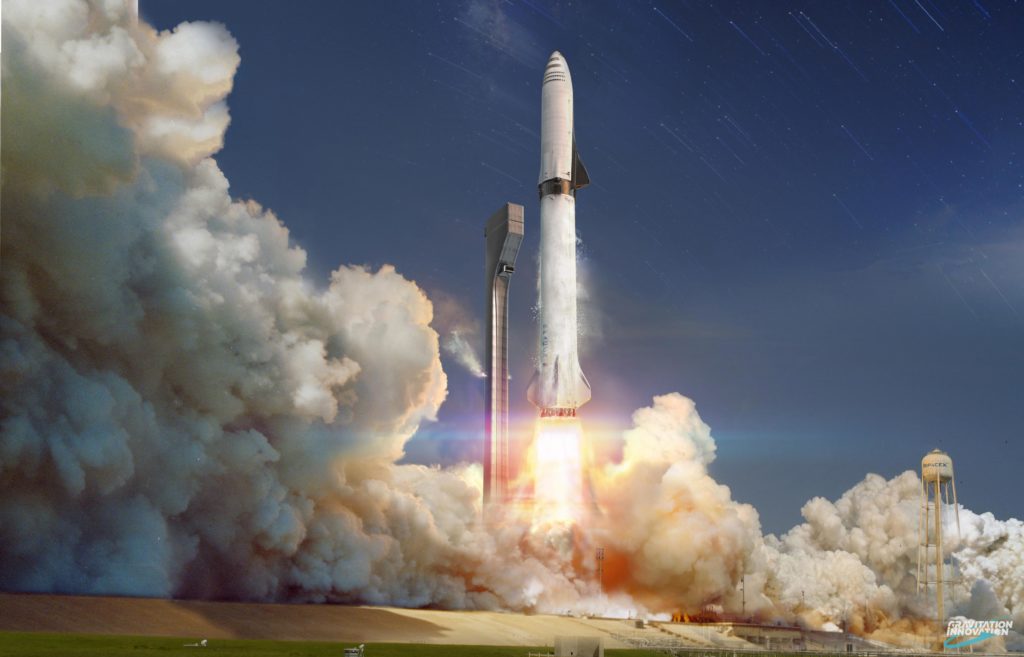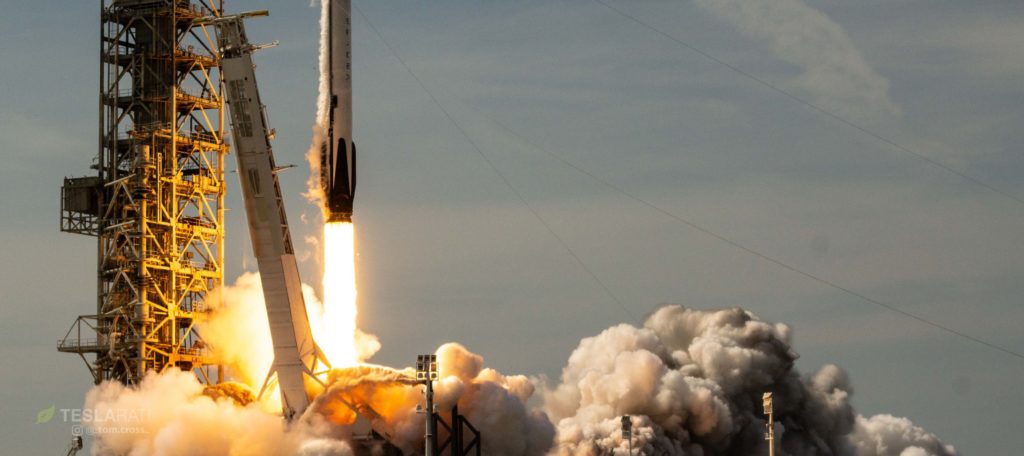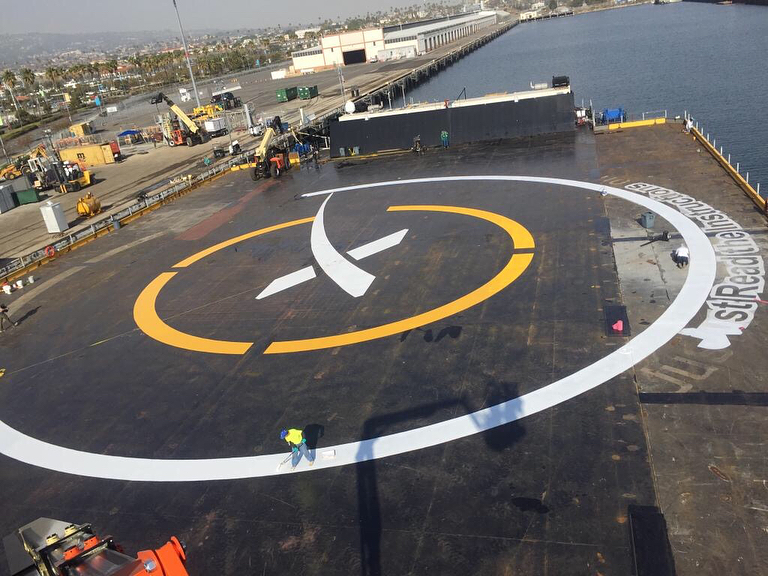
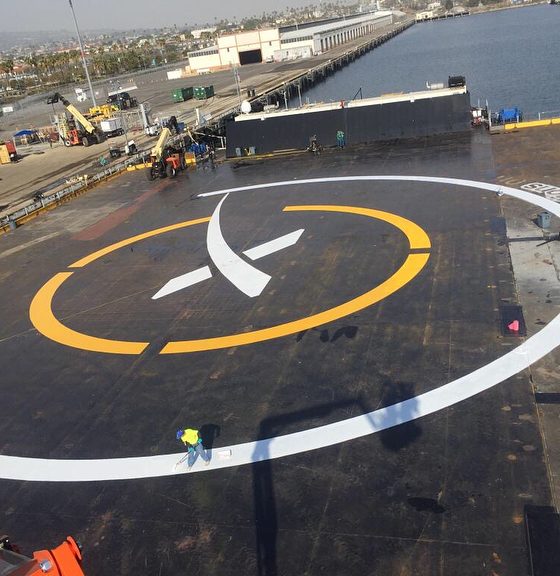
News
SpaceX readies Falcon 9 Block 5s for bi-coastal launches and landings
After several months of preparation behind the scenes, SpaceX’s second and third serial Falcon 9 Block 5 rockets are ready for the first launches of the upgraded vehicle from Vandenberg Air Force Base, CA (VAFB) and Cape Canaveral Air Force Station, FL (CCAFS).
On the calendar for 1:50 am EDT/5:50 UTC July 22 and 4:39 am PDT/11:39 UTC July 25, SpaceX launches of Telstar 19V and Iridium NEXT-7 are set to mark the beginning of a new era for the company, where all future missions will fly with Block 5 hardware upgraded for reusability and reliability and attempt recovery almost without fail.
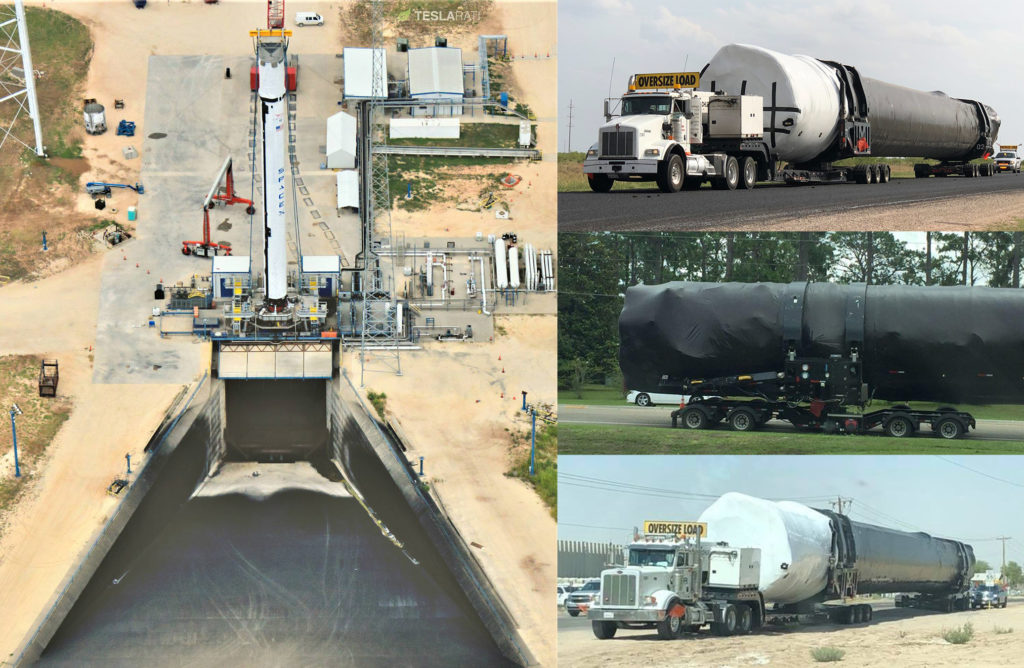
Three Falcon 9 boosters captured in various states of transport and testing over the last six weeks, two of which are B1047 and B1048. (Teslarati/Tesla Motors Club/Reddit/Facebook)
Bursting out of the expendable rocket cocoon
While it may be the case that an odd launch or two require a booster be expended to prevent schedule delays or carry an exceptionally heavy satellite to an exceptionally high orbit, it’s safe to say that such a mission with Block 5 boosters will be an anomaly. Somewhat iffy comments posted on Reddit recently claimed that Falcon Block 5 boosters would be able to easily (and rapidly) hop between roles as side and center boosters for both Falcon 9 and Falcon Heavy. While wild, those claims, in retrospect, make a lot of sense, even if the reality of Block 5 booster interchangeability was a tad exaggerated.
If SpaceX truly wants to end the practice of expending rocket boosters, – and eventually fairings and upper stages, with any luck – the company will truly need to embrace a strategy that’s long been floated by executives like CEO Elon Musk and COO/President Gwynne Shotwell. That strategy dictates that SpaceX routinely use both Falcon 9 and Falcon Heavy as an almost interchangeable and rocket team capable of launching nearly every orbital payload conceivable today, all while remaining in fully or mostly reusable modes of operation.
- B1046 returned to Port Canaveral shortly after its May 4 debut, and is now being carefully analyzed as pathfinder hardware. (Tom Cross)
- OCISLY as seen by Tom Cross on March 5, readying for a busy future of rocket recoveries. (Tom Cross)
- At the request of a friend, artist David Romax put together a truly jaw-dropping collection of concept art featuring SpaceX’s BFR rocket and its Cargo and Crew spaceships. (Gravitation Innovation/David Romax)
At the moment, educated estimates of Falcon Heavy’s true performance margins with dual booster landings at SpaceX’s Florida landing zones and center core recovery aboard Of Course I Still Love You (OCISLY) suggest that the Block 5 version of Falcon Heavy should be capable of launching every commercial satellite planned or penciled in for launch over the next five years, at a minimum. Finally, while the Falcon family’s fuel choice of high-grade kerosene (RP-1) and liquid oxygen make the rocket far more compact and energy-dense than alternatives, one downside of that choice is a loss of efficiency, although brute-force strength makes FH a competitive beast for all missions beyond Earth orbit (Mars, Venus, Saturn, asteroids, comets, etc).
However, a fully-expendable Block 5 Falcon Heavy seems to be at least 3X as unlikely as an expendable Block 5 Falcon 9. Nevertheless, CEO Elon Musk made it clear that a nominal Falcon Heavy launch where both side boosters were recovered at sea and the center booster expended could accomplish a full ~85-90% of an entirely expendable mission, and for roughly $95m. As such, a combination of reusable Falcon 9s, reusable Falcon Heavys, and ~30%-expendable Falcon Heavys could successfully complete every plausible commercial and non-commercial launch in the world and do so at the lowest cost for the better part of the next five years, at which point the company’s next-gen Big F____ Rocket (BFR) ought to be operational.
Side boosters landing on droneships & center expended is only ~10% performance penalty vs fully expended. Cost is only slightly higher than an expended F9, so around $95M.
— Elon Musk (@elonmusk) February 12, 2018
Telstar 19V and Iridium-7
With any luck, SpaceX’s next two launches will be the first huge step in the direction of that one-stop-shop for competitive transportation to orbit. Teslarati photographer Tom Cross will be setting up remote cameras for the Telstar 19V’s Florida liftoff later this evening, while our West Coast fellow and famed Mr Steven-stalker Pauline Acalin will be setting up her own set of remote cameras for VAFB’s Falcon 9 Block 5 debut on Tuesday.
Static fire test of Falcon 9 complete— targeting July 25 launch of Iridium-7 from Vandenberg Air Force Base in California.
— SpaceX (@SpaceX) July 21, 2018
On the East Coast, drone ship OCISLY has already departed Port Canaveral with a duo of support vessels and a dedicated tugboat, while the West Coast’s Just Read The Instructions (JRTI) will likely take leave of the Port of Los Angeles within 24 hours. Those dual, successful (?) rocket landings will hopefully mark the first of many dozens of missions for F9 boosters B1047 and B1048.
Follow us for live updates, peeks behind the scenes, and photos from Teslarati’s East and West Coast photographers.
Teslarati – Instagram – Twitter
Tom Cross – Twitter
Pauline Acalin – Twitter
Eric Ralph – Twitter

News
Tesla China delivery centers look packed as 2025 comes to a close
Needless to say, it appears that Tesla China seems intent on ending 2025 on a strong note.

Tesla’s delivery centers in China seem to be absolutely packed as the final days of 2025 wind down, with photos on social media showing delivery locations being filled wall-to-wall with vehicles waiting for their new owners.
Needless to say, it appears that Tesla China seems intent on ending 2025 on a strong note.
Full delivery center hints at year-end demand surge
A recent image from a Chinese delivery center posted by industry watcher @Tslachan on X revealed rows upon rows of freshly prepared Model Y and Model 3 units, some of which were adorned with red bows and teddy bears. Some customers also seem to be looking over their vehicles with Tesla delivery staff.
The images hint at a strong year-end push to clear inventory and deliver as many vehicles as possible. Interestingly enough, several Model Y L vehicles could be seen in the photos, hinting at the demand for the extended wheelbase-six seat variant of the best-selling all-electric crossover.
Strong demand in China
Consumer demand for the Model Y and Model 3 in China seems to be quite notable. This could be inferred from the estimated delivery dates for the Model 3 and Model Y, which have been extended to February 2026 for several variants. Apart from this, the Model Y and Model 3 also continue to rank well in China’s premium EV segment.
From January to November alone, the Model Y took China’s number one spot in the RMB 200,000-RMB 300,000 segment for electric vehicles, selling 359,463 units. The Model 3 sedan took third place, selling 172,392. This is quite impressive considering that both the Model Y and Model 3 are still priced at a premium compared to some of their rivals, such as the Xiaomi SU7 and YU7.
With delivery centers in December being quite busy, it does seem like Tesla China will end the year on a strong note once more.
News
Tesla Giga Berlin draws “red line” over IG Metall union’s 35-hour week demands
Factory manager André Thierig has drawn a “red line” against reducing Giga Berlin’s workweek to 35 hours, while highlighting that Tesla has actually increased its workers’ salaries more substantially than other carmakers in the country.

Tesla Giga Berlin has found itself in a new labor dispute in Germany, where union IG Metall is pushing for adoption of a collective agreement to boost wages and implement changes, such as a 35-hour workweek.
In a comment, Giga Berlin manager André Thierig drew a “red line” against reducing Giga Berlin’s workweek to 35 hours, while highlighting that Tesla has actually increased its workers’ salaries more substantially than other carmakers in the country.
Tesla factory manager’s “red line”
Tesla Germany is expected to hold a works council election in 2026, which André Thierig considers very important. As per the Giga Berlin plant manager, Giga Berlin’s plant expansion plans might be put on hold if the election favors the union. He also spoke against some of the changes that IG Metall is seeking to implement in the factory, like a 35-hour week, as noted in an rbb24 report.
“The discussion about a 35-hour week is a red line for me. We will not cross it,” Theirig said.
“(The election) will determine whether we can continue our successful path in the future in an independent, flexible, and unbureaucratic manner. Personally, I cannot imagine that the decision-makers in the USA will continue to push ahead with the factory expansion if the election results favor IG Metall.”
Giga Berlin’s wage increase
IG Metall district manager Jan Otto told the German news agency DPA that without a collective agreement, Tesla’s wages remain significantly below levels at other German car factories. He noted the company excuses this by referencing its lowest pay grade, but added: “The two lowest pay grades are not even used in car factories.”
In response, Tesla noted that it has raised the wages of Gigafactory Berlin’s workers more than their German competitors. Thierig noted that with a collective agreement, Giga Berlin’s workers would have seen a 2% wage increase this year. But thanks to Tesla not being unionized, Gigafactory Berlin workers were able to receive a 4% increase, as noted in a CarUp report.
“There was a wage increase of 2% this year in the current collective agreement. Because we are in a different economic situation than the industry as a whole, we were able to double the wages – by 4%. Since production started, this corresponds to a wage increase of more than 25% in less than four years,” Thierig stated.
News
Tesla is seeing a lot of momentum from young Koreans in their 20s-30s: report
From January to November, young buyers purchased over 21,000 Teslas, putting it far ahead of fellow imported rivals like BMW and Mercedes-Benz.

Tesla has captured the hearts of South Korea’s 20s-30s demographic, emerging as the group’s top-selling imported car brand in 2025. From January to November, young buyers purchased over 21,000 Teslas, putting it far ahead of fellow imported rivals like BMW and Mercedes-Benz.
Industry experts cited by The Economist attributed this “Tesla frenzy” to fandom culture, where buyers prioritize the brand over traditional car attributes, similar to snapping up the latest iPhone.
Model Y dominates among young buyers
Data from the Korea Imported Automobile Association showed that Tesla sold 21,757 vehicles to the 20s-30s demographic through November, compared to BMW’s 13,666 and Mercedes-Benz’s 6,983. The Model Y led the list overwhelmingly, with variants like the standard and Long Range models topping purchases for both young men and women.
Young men bought around 16,000 Teslas, mostly Model Y (over 15,000 units), followed by Model 3. Young women followed a similar pattern, favoring Model Y (3,888 units) and Model 3 (1,083 units). The Cybertruck saw minimal sales in this group.
The Model Y’s appeal lies in its family-friendly SUV design, 400-500 km range, quick acceleration, and spacious cargo, which is ideal for commuting and leisure. The Model 3, on the other hand, serves as an accessible entry point with lower pricing, which is valuable considering the country’s EV subsidies.
The Tesla boom
Experts described Tesla’s popularity as “fandom culture,” where young buyers embrace the brand despite criticisms from skeptics. Professor Lee Ho-geun called Tesla a “typical early adopter brand,” comparing purchases to iPhones.
Professor Kim Pil-soo noted that young people view Tesla more as a gadget than a car, and they are likely drawn by marketing, subsidies, and perceived value. They also tend to overlook news of numerous recalls, which are mostly over-the-air software updates, and controversies tied to the company.
Tesla’s position as Korea’s top import for 2025 seems secured. As noted by the publication, Tesla’s December sales figures have not been reported yet, but market analysts have suggested that Tesla has all but secured the top spot among the country’s imported cars this year.
